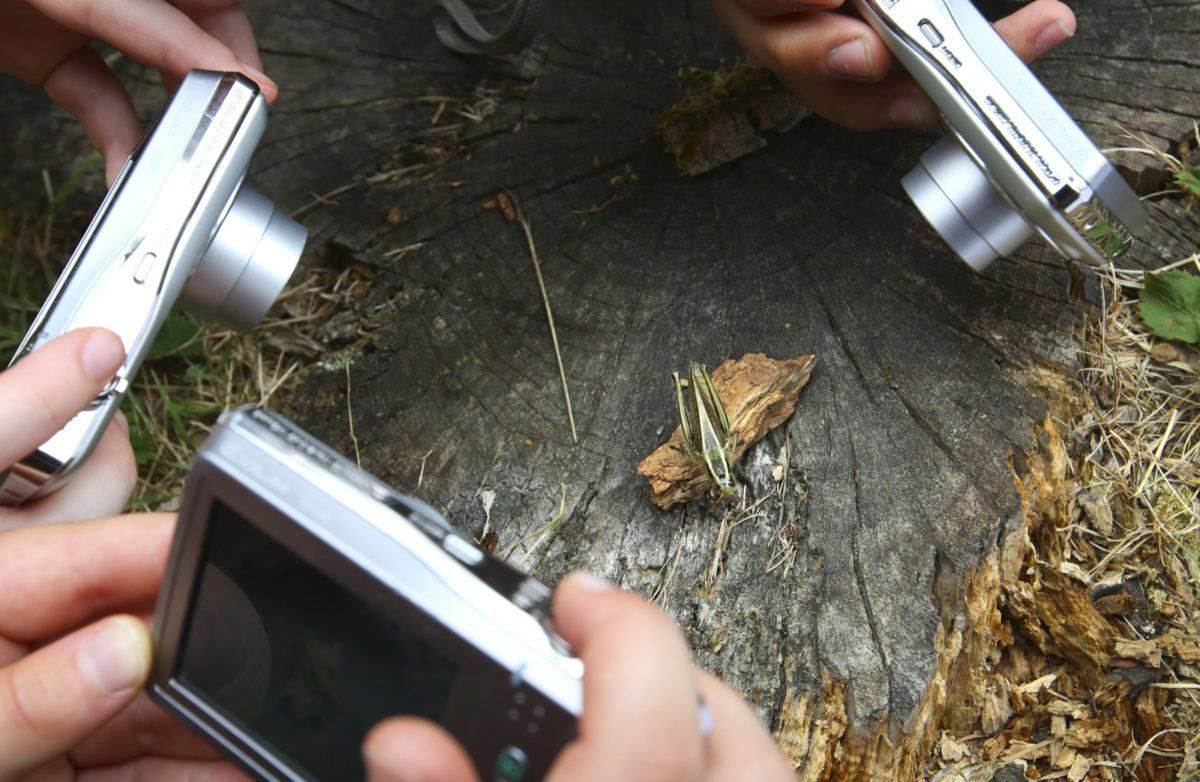What makes a great photo?
Have you ever walked past a tree/barn/flower/canoe every day and not truly seen it? But then one day, when the sun was setting, or a fog rolled in, or the rain had just stopped, has that same tree/barn/flower/canoe stopped you in your tracks with its beauty, as if you were seeing it for the first time? THAT is the moment you want to have your camera with you to start taking your photos.
You are already stopped and staring at this beautiful scene, so now ASK yourself what about it has filled you with awe? If you can narrow that down, and capture it with your camera, most likely your photo will make your viewers stop and be in awe as well. Take a moment to think about the “WHAT? Or WHY?”
Is it the bold yellow buttercups contrasting with the purple violet flowers in the wild grass as the sun sets on your walk back from the dining hall after dinner?
Is it a dramatic juxtaposition of a smooth colourful flower against the scratchy bark of a tree?
Is it a foggy morning walk up to flag raising? What is it, exactly, that made you want to take a picture? Narrow down what made you stop and only include THAT in your photo. That means, include everything that makes the scene say WOW, and none of the parts that detracts or takes away from the photo.
You can move your feet, left or right, to “remove” a tree that is blocking the view, or you can lay down on the ground to see through the daisy’s as if they are stained glass windows. Change your position/perspective, and you can change your image to make it better.
Photos are about light, colour, contrast, and texture.
Unless the light in your photo is an early morning sunrise, or the glow of a sunset….most pretty or dramatic light comes from the side or behind of our subjects, because this is the kind of light that defines textures by the interplay of shadows and highlights that it creates. (the light on these apple blossoms is from above and behind, and they “pop” from the scene because they are against a dark background)
Once you have the subject and the light you can compose your photo. Compositionally, (and for simplicity) the Rule of Thirds is the best place to start.
We have a natural tendency to want to place the main subject in the middle. But that leaves empty space on the left and right of your picture with nothing to showcase.
BUT IF you divide your frame into thirds vertically and horizontally, where those 4 lines intersect (the red dot) is where you should try to place your subjects or important elements of interest. Placing it off centre using the rule of thirds will lead to a more attractive composition.
Place your horizons along either the top line or the lower lines so your photo doesn’t become “CUT” in half with a horizon. Emphasize the sky or the ground, whichever one you are trying to showcase. How many times have you watched the waves splash on rocks… or been in awe of just how blue the sky is? Decide which is more important to your photo and emphasize that by refining your composition.
( Rule of Thirds works vertically as well)
Photography is storytelling without words. It is the ability to capture a time and place, or moment, and light to make a viewer FEEL as if they are there with you. Remember: when we snap the shutter on our cameras, we aren’t taking a photo of what is in front of us, we are photographing the way the light is illuminating the subject matter in front of us. So it all starts with the light, and a subject.
If you don’t feel the WOW, it doesn’t mean there aren’t photos there. By merely changing your perspective; Looking UP into the forest canopy, looking DOWN at the leaves after a rainfall, laying DOWN to look UP… no matter how, I hope you get a chance to explore with your cameras this summer. Take only photos, leave only footprints, and show us what made you go WOW!
Live Lightly,
~Tannis Toohey



